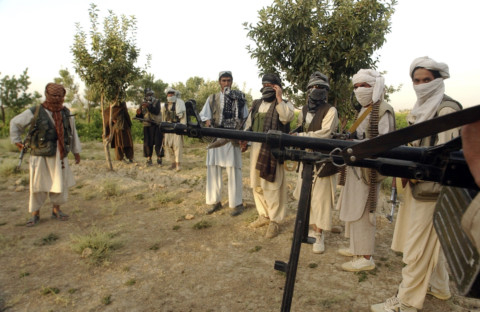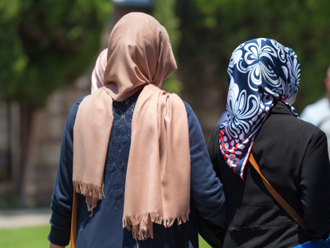
Kabul has been in the grip of a major offensive from the Afghan resistance during the last two weeks. A bloody 15-hour siege of the posh Intercontinental Hotel killed 22. Days later when an ambulance packed with explosives blew up on a busy Kabul street 95 people died and scores were injured. Three days later in a pre-dawn raid that lasted five hours the militants attacked the military academy killing at least 11 Afghan soldiers and wounding 16. Earlier, Save the Children offices were attacked in eastern city of Jalalabad.
It is too early to suggest if the recent surge in Taliban attacks will lead to any long-term military advantage or be a temporary phenomenon. The attacks nonetheless, reflect the Taliban’s ability to continue impeding Kabul regime’s ability to stabilise the country.
More than 16 years after the US attacked Afghanistan and installed a favoured government, the Kabul regime despite the presence of American forces, controls just about 60 per cent of Afghanistan. The US worked under the mistaken belief that the Taliban, who faded away following the American invasion, were gone forever. They have returned with a vengeance.
The Taliban, forming the core of Afghan resistance, have kept the Kabul forces on the run and the American forces holed up in their compounds. The regime is unable to establish its writ across the country. Afghanistan has thus morphed into a conflict which is sucking more of American resources and is likely to rank alongside Vietnam and Iraq as one of the biggest blunders of American policymaking.
The direct costs of this longest war in American history already exceed $1 trillion (Dh3.67 trillion). With the US emphasis on the air campaign the cost in American lives — 2,200 during this period - is relatively modest compared to 58,220 men America lost in the Vietnam war. With fewer body bags coming home the domestic pressure for the withdrawal from Afghanistan is yet to build up within America. The US dropped 4,000 bombs across Afghanistan during 2017 alone. Civilian casualties are on the rise. According to the UN, the number of civilians killed during the first nine months of 2017 are at a record high.
The security situation on the ground therefore, belies the American claim that the Taliban are in retreat and that the American installed government in Kabul is one step away from providing security across much of the country.
Military option
For over 16 years every US commander in Afghanistan has conceded that there is no military solution and a political settlement is necessary. Yet, three successive American presidents have fallen into the Pentagon’s trap in selecting the military option as a means of finding a favourable political settlement with the people who have never lost a war against a foreign invader. In the coming months the US ground forces are set to increase to about 15,000 of which 4,000 are there under the new military strategy President Donald Trump announced some months back. Pursuit of the military option will inevitably end up making things worse in Afghanistan.
Referring to the Americans some years ago the Taliban famously said, “They have the watches and we have time.” The Taliban-led resistance has made withdrawal of foreign forces the pre-condition for entering into negotiations for a peaceful settlement. Now, when they have successfully held back the Americans for over 16 years they cannot be easily enticed to agree to come to a negotiated settlement while foreign forces remain in their country.
The Taliban have, in the meantime, continued to create chaos in the country that disallows the US installed regime to settle. They have had remarkable success in creating war weariness in almost all coalition partners. The longest war in American history has already cost more than $1 trillion, with no end in sight. An Iraq war veteran, Senator Tammy Duckworth, says “we’re fighting the same battle over and over again.”
As the fractured government suffers from administrative paralysis the country is run through a nexus of warlords, political or tribal elite and security forces. President Ashraf Gani has admitted that the government would not survive for more than six months without American support.
Nearly 40 years of fighting within and against the occupying forces have hardened positions within Afghanistan. The ‘resistance’ mentality is that they are fighting a ‘holy war.’ A negotiated settlement appears increasingly out of reach now.
In view of the stalemate neither side is yet willing to try a different approach. Both sides fear that a change of approach my mean defeat that they are not prepared to risk. Hence, the perpetual waiting game.
Former president Barack Obama’s security cabinet and more notably Defence Secretary Robert Gates recognised that “the US-led war against the Taliban cannot be won…” The Taliban, Gates correctly recognised, are part of Afghanistan’s “political fabric.” And yet, the hubris of military victory against these nationalists continues. The earlier this recognition is made it will be easier to pull back. Anything short will make US costs of misadventure unacceptably high and yet the result will be no different.
Sajjad Ashraf served as an adjunct professor at the Lee Kuan Yew School of Public Policy, National University of Singapore, from 2009-2017. He was a member of Pakistan’s Foreign Service from 1973-2008 and served as Pakistan’s consul general to Dubai during mid 1990s.









